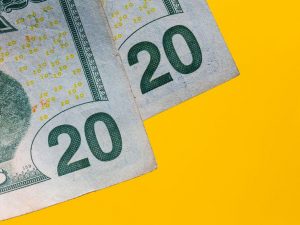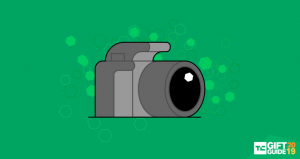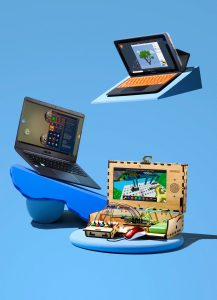To go with a 0 to 60 mph time under three seconds, 750 horsepower, and the ability to refill its battery in just over 20 minutes, the engineers at Porsche gave their all-new, all-electric Taycan a two-speed gearbox. And while that feature is unlikely to grace any headlines, it represents a potentially major shift for the electric car market.
Apart from the Taycan, every production EV uses a single-speed transmission, and gets along just fine. Internal combustion engines need a bunch of gears because they have a narrow RPM window within which they can operate efficiently. For electric motors, that window is much wider, so a single-speed works for both low-end acceleration and highway driving. It does require some compromise, and so EV makers favor low-end acceleration over Autobahn-worthy top speeds. Where most electrics top out around 125 mph (Tesla limits its cars to 155), the Taycan will touch 161 mph.
As the automakers crowding into this market look to differentiate the dozens of models they’re preparing to roll out, and as electric driving tech continues to evolve, Porsche is unlikely to be the only one making this move. The Taycan’s transmission is an in-house solution, and you can’t just grab a Formula E race car’s multispeed transmission and plop it in your daily driver. But auto industry supplier ZF is working on its own version of the two-speeder, which it’s looking to sell to any automaker that doesn’t want to choose between low-end torque and top speed glory.
“With a two-speed transmission, we can do both,” says Stephan Demmerer, who runs ZF’s E-Mobility engineering division. For automakers willing to take on a bit more complexity, he says, the two-speed setup can either improve an EV’s range by 5 percent, or push its top speed beyond the typical cap.
It does that by improving the conversion rate of battery power to actual wheel power. Every one percentage point in energy conversion efficiency translates into two-percent more range, ZF says. Its two-stage shifter is modular, so it can fit into a range of vehicles, and comes mated to a motor with a maximum power rating of 140 kW. It’s programmed to shift between its two speeds at 43 mph, though the computer can be programmed to make the change at different points based on the route, topography, or the distance the driver hopes to cover before plugging in. Carmakers can use the system to squeeze more range out of a smaller battery—thereby reducing vehicle weight—or pair it with larger batteries to pursue performance, whether it’s racing around a track or towing the family boat.
“There is a real race to compete on the energy efficiency of EVs,” says Venkat Viswanathan, a mechanical engineer at Carnegie Mellon University. “Tesla has remained well ahead in energy efficiency even with their single-speed transmissions, and I think ZF’s approach could give other automakers a chance to eat into some of that advantage.”
The two-speed transmission is only arriving now partly because it’s complicated. Multispeed transmissions must be robust to deal with the massive amounts of torque that electric motors can generate in a very short period of time, says Shashank Sripad, a mechanical engineer also from Carnegie Mellon. Tesla tried it with its proof of concept Roadster more than a decade ago, but ran into reliability challenges and has stuck with single-speeds ever since. And because they require more maintenance, these gearboxes risk undercutting the EV selling point of minimal upkeep costs.
Moreover, going beyond one speed hasn’t really been necessary so far. “Batteries have been small, with ranges of about 100 to 150 kilometers and the focus was more on inner-city driving,” Demmerer says. “Today we see all-round use of battery electric vehicles with a higher portion of highway driving, and the range has increased.” Two-speed setups have an advantage when people are driving in many applications, he says, and that 5 percent range improvement can save significant money as battery capacity continues to increase. In fact, the two-speed system makes the most economic sense in vehicles with larger batteries—or in higher-performance systems—so urban runabouts will likely stick with single-speed transmissions indefinitely.
Unless you’ve got the cash to drop on a shiny new Porsche Taycan, you’ll have to wait a bit for this new tech. ZF hasn’t announced who will be using the new transmission yet, and Demmerer says it likely won’t hit the market for another three years, given that his team just wrapped up the advanced engineering work. But the shift is coming.
More Great WIRED Stories
- 3 years of misery inside Google, the happiest place in tech
- The weird, dark history of 8chan and its founder
- 8 ways overseas drug manufacturers dupe the FDA
- A Boeing code leak exposes security flaws deep in a 787
- The terrible anxiety of location sharing apps
- 🏃🏽♀️ Want the best tools to get healthy? Check out our Gear team’s picks for the best fitness trackers, running gear (including shoes and socks), and best headphones.
- 📩 Get even more of our inside scoops with our weekly Backchannel newsletter



